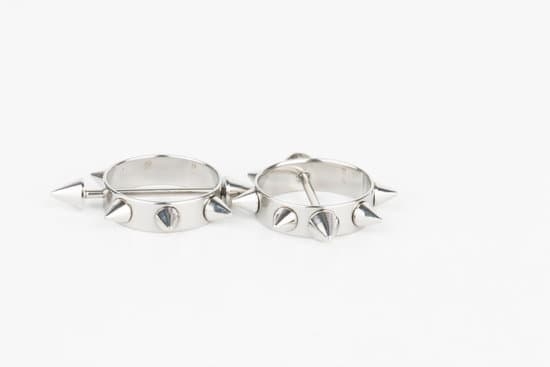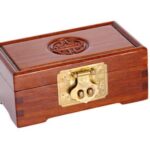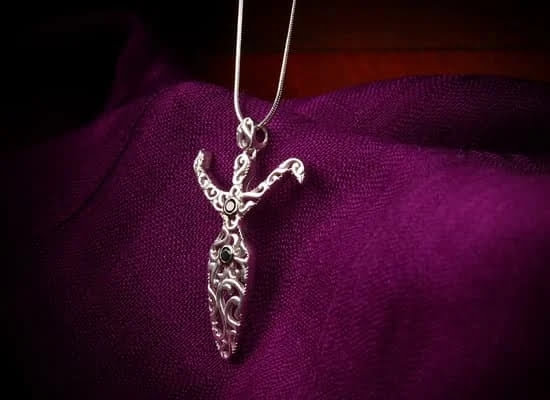Diamond jewelry is not only a timeless symbol of love and luxury, but it also holds immense value for its rarity and brilliance. However, taking care of these precious pieces can be a daunting task.
That’s why many individuals find themselves asking the question: “Can you boil diamond jewelry?” In this article, we will explore the answer to this query and provide you with all the necessary information to make an informed decision about cleaning and maintaining your treasured diamond jewelry.
Understanding the chemical composition of diamonds is crucial when considering whether boiling is safe for your diamond jewelry. Diamonds are made up entirely of carbon atoms that have been subjected to high pressure and temperature deep within the Earth’s mantle. This unique composition is what gives diamonds their unparalleled hardness and brilliance. While diamonds are exceptionally stable under normal circumstances, it is important to consider how they might react to extreme heat or boiling temperatures.
Before indulging in any cleaning method involving boiling, there are several factors that must be carefully considered. The risks associated with exposing diamond jewelry to high heat should not be underestimated.
It is essential to assess the specific type of diamond jewelry, as well as its setting and any additional gemstones that may be present. Additionally, understanding how boiling can potentially affect different types of cuts and settings will help determine whether this method is suitable for your particular piece of diamond jewelry.
Boiling diamond jewelry may seem like a convenient solution for cleaning purposes; however, caution must be exercised due to the potential risk of damage. In upcoming sections of this article, we will delve deeper into the process of boiling diamond jewelry – from precautions to take during the boiling process itself to recommended tools or materials needed. We will also explore alternative methods for cleaning diamond jewelry without resorting to boiling, weighing both their effectiveness and risks.
Remember, proper care and maintenance are essential in preserving the longevity and brilliance of your prized diamond jewelry pieces. So let us dive into the intricacies and nuances of boiling diamond jewelry, as well as alternative cleaning methods, to ensure that your cherished diamonds continue to shine with their full glory for years to come.
Understand the Chemical Composition
Diamonds are renowned for their exceptional beauty and value, often representing commitment, love, and luxury. However, have you ever wondered why someone would ask the question “Can You Boil Diamond Jewelry?” The answer lies in the desire to maintain and preserve the pristine condition of these precious gemstones. To fully grasp the potential impact of boiling on diamond jewelry, it is crucial to understand their chemical composition.
At a molecular level, diamonds consist purely of carbon arranged in a crystal lattice structure. This unique chemical composition is what sets diamonds apart from other gemstones. The strong covalent bonds between carbon atoms make diamonds one of the hardest known substances on Earth. Their resistance to scratches and overall durability have long been admired.
While diamonds are exceptionally resistant to mechanical damage, they are not invincible when exposed to high temperatures. Under ordinary circumstances, a diamond’s stability remains unaffected by heat or boiling temperatures. However, extreme or rapid changes in temperature can cause thermal shock, which may lead to fractures or even complete shattering of the stone.
Therefore, understanding the chemical composition of diamonds helps us recognize that while they can withstand heat under normal conditions, precautions must be taken when exposing them to boiling temperatures. Assessing various factors before attempting to boil diamond jewelry is crucial in order to minimize any potential risks or damages that could occur during the process.
Factors to Consider Before Boiling Diamond Jewelry
Before attempting to boil diamond jewelry, there are several important factors that should be taken into consideration. While boiling may seem like a convenient and effective cleaning method, it is crucial to evaluate the potential risks and damages that it could pose to your precious diamond jewelry.
One of the first factors to consider is the type of diamond jewelry you are planning to boil. Different types of settings and materials may react differently to high temperatures. For example, if your diamond jewelry contains any other gemstones or delicate materials such as pearls or opals, boiling could cause irreparable damage to these stones. Additionally, certain metals used in jewelry settings can also be affected by heat, leading to discoloration or warping.
| Factors | Risks/Damages |
|---|---|
| Type of Diamond Jewelry | Potential damage to gemstones and settings |
| Metal Composition | Possible discoloration or warping |
| Jewelry Condition | Risk of further damage if already compromised |
The Boiling Process
Step-by-Step Guide to Boiling Diamond Jewelry
If you have determined that it is safe to boil your diamond jewelry, here is a step-by-step guide on how to do it properly:
- Prepare the boiling solution: Fill a pot with enough water to fully submerge the diamond jewelry. Add a small amount of mild dish soap or jewelry cleaning solution to the water. Avoid using harsh chemicals or bleach, as they can damage the jewelry.
- Heat the solution: Place the pot on the stove and heat the water to a gentle boil. It is important not to let the water come to a rolling boil, as this can cause rapid temperature changes and potentially shock or crack the diamonds.
- Submerge the jewelry: Carefully place your diamond jewelry into the boiling solution using a pair of tongs or a strainer spoon. Make sure that all pieces are fully submerged.
- Let it simmer: Allow the jewelry to simmer in the boiling solution for about 10-15 minutes. This will help loosen any dirt, oil, or debris that may be present on the surface or in between gemstone settings.
- Remove and rinse: After simmering, gently remove your diamond jewelry from the boiling solution with tongs or a strainer spoon, being cautious not to touch any hot surfaces directly. Rinse each piece thoroughly under warm running water to remove any remaining soap residue.
- Dry and polish: Use a soft, lint-free cloth to carefully dry your diamond jewelry after rinsing. Take extra care when drying any intricate or delicate settings that may trap moisture. Once dry, you can further enhance their shine by gently polishing with a clean cloth.
Precautions and Recommended Tools
While boiling diamond jewelry can be done safely if certain precautions are taken, it is important to consider these factors:
- Type of metal setting: Different metals may react differently to high heat. For example, gold and platinum settings can generally withstand boiling temperatures without damage, but certain alloys or delicate settings might be more prone to damage. Consider the specific metal type and any additional gemstone settings when deciding whether or not to boil.
- Use a non-abrasive cleaning solution: Always choose a mild dish soap or jewelry cleaning solution that is specifically formulated for use on diamonds and fine jewelry. Avoid using abrasive cleaners or toothpaste, as they can scratch the surface of the diamonds.
- Gentle handling: When removing or placing diamond jewelry in the boiling solution, use tools such as tongs or a strainer spoon to avoid direct contact with hot surfaces. This will help prevent accidental damage to the jewelry or burns to your hands.
- Seek professional advice: If you are unsure about the suitability of boiling your diamond jewelry or if it has intricate designs, valuable gemstones, or antique settings, it is always best to seek advice from a professional jeweler who can offer tailored guidance based on your specific piece.
By following these procedures and taking necessary precautions, you can safely boil your diamond jewelry for cleaning purposes. However, it is important to remember that not all diamond jewelry should be boiled, and alternative methods exist for cleaning and maintaining your precious pieces.
The Impact of Boiling on Diamond Jewelry
Diamond jewelry is a valuable and cherished possession for many, often passed down through generations. Over time, these precious pieces can accumulate dirt and lose their sparkle. Many people wonder if boiling diamond jewelry is a safe and effective method for cleaning and restoring their shine. In this section, we will explore the potential effects of boiling on different types and cuts of diamond jewelry, as well as the pros and cons of this cleaning method.
When considering the impact of boiling on diamond jewelry, it’s important to realize that diamonds are incredibly durable. They are made up of carbon atoms arranged in a crystal lattice structure, which gives them their hardness and strength. As a result, diamonds can withstand high heat and are generally unaffected by boiling temperatures.
However, certain factors should be taken into consideration before attempting to boil your diamond jewelry. These include the presence of any fragile gemstones or settings in your piece. While diamonds themselves may not be damaged by boiling, other stones such as emeralds or pearls could be more sensitive to heat.
Furthermore, the way the diamond is cut may also affect its reaction to boiling. Diamonds with more intricate cuts or those that have been treated with certain coatings may be more susceptible to damage from extreme temperatures.
To assess whether boiling is a suitable cleaning method for your specific piece of diamond jewelry, it is recommended to consult with a professional jeweler who can evaluate its composition and condition. They will be able to provide guidance on whether boiling would be safe or detrimental to your particular piece.
Alternative Cleaning Methods
Exploring Alternative Methods
While boiling diamond jewelry may be a tempting solution for cleaning purposes, it is essential to consider alternative methods that can effectively remove dirt and grime without the risk of damage. In fact, there are several tried-and-tested techniques that can help restore the brilliance and luster of diamond jewelry.
Jewelry Cleaning Solutions
One alternative method to boiling diamond jewelry involves using specialized jewelry cleaning solutions. These solutions are designed specifically for cleaning precious gemstones and will not harm the diamonds or their settings. To use a jewelry cleaning solution, simply soak the diamond jewelry in the solution as instructed on the packaging, usually for a few minutes.
Afterwards, gently scrub the jewelry with a soft brush (such as a toothbrush) to remove any remaining dirt or debris. Rinse thoroughly with clean water and pat dry with a soft cloth.
Ultrasonic Cleaners
Another effective alternative method is using ultrasonic cleaners. These devices utilize high-frequency sound waves to create tiny bubbles that gently remove dirt particles from diamond jewelry. Ultrasonic cleaners work by creating microscopic vibrations within a cleaning solution, which agitate contaminants clinging to the surface of the diamonds.
However, it is important to exercise caution when using this method as certain types of diamond enhancements or fragile settings may not withstand the agitation caused by ultrasonic cleaners. Therefore, always consult a professional jeweler before using an ultrasonic cleaner on your diamond jewelry.
By exploring these alternative methods, you can safely clean and maintain your diamond jewelry without subjecting it to extreme heat or potential risks associated with boiling. However, it should be noted that each method has its own benefits and limitations; therefore, it is advisable to assess your specific cleaning needs and seek professional advice if uncertain about which method is best suited for your diamonds.
Remember, regular maintenance is crucial in preserving the beauty and quality of your precious diamond jewelry. Whether you choose to use jewelry cleaning solutions, ultrasonic cleaners or other methods, it is important to follow the manufacturer’s instructions and exercise care when handling your valuable pieces. By taking proper care of your diamond jewelry, you can ensure that it retains its brilliance and sparkle for many years to come.
Enhancing Brilliance and Restoring Luster
When it comes to diamond jewelry, maintaining its brilliance and luster is essential to keep it looking its best. Over time, dirt, oils, and residue can accumulate on the surface of the diamonds, diminishing their sparkle and shine. In this section, we will explore various tips and tricks for enhancing the brilliance and restoring the luster of your diamond jewelry.
One effective method to enhance the brilliance of diamond jewelry is through regular cleaning. While boiling may be an option for some types of jewelry, there are alternative methods that can achieve similar results without exposing your precious gems to high temperatures. One option is to use a jewelry cleaning solution specifically formulated for diamonds. These solutions are designed to dissolve oils and dirt without causing any harm to the diamonds or their settings.
To clean your diamond jewelry using a cleaning solution, follow these steps:
- Fill a bowl with warm water and add a few drops of the cleaning solution.
- Place your diamond jewelry in the bowl and let it soak for a few minutes.
- Gently scrub the surface of each piece using a soft-bristled brush.
- Rinse the jewelry under running water to remove any remaining residue.
- Pat dry with a soft cloth or let it air dry before storing.
Another popular method for restoring luster is by using ultrasonic cleaners. These devices use high-frequency sound waves to create tiny bubbles that agitate and clean the jewelry thoroughly. Ultrasonic cleaners are especially effective at removing stubborn dirt or grime from hard-to-reach areas such as prongs or intricate settings.
To clean your diamond jewelry using an ultrasonic cleaner:
- Fill the cleaner with warm water and add a small amount of mild dish soap (check manufacturer’s instructions).
- Place your diamond jewelry in the basket provided in the cleaner.
- Turn on the device and let it run for the recommended amount of time (usually a few minutes).
- Remove the jewelry from the basket and rinse it under running water.
- Pat dry with a soft cloth or let it air dry before storing.
In addition to regular cleaning, professional maintenance is highly recommended to ensure the longevity of your diamond jewelry. Jewelers have access to specialized cleaning equipment and techniques that can thoroughly clean and restore the brilliance of your diamonds. It is advisable to have your diamond jewelry professionally cleaned at least once a year to address any potential issues and keep them looking their best.
Remember, while boiling may be an option for some types of diamond jewelry, it is crucial to consider the potential risks and damages that boiling could pose. Therefore, exploring alternative cleaning methods like using jewelry cleaning solutions or ultrasonic cleaners can be safer options that still provide excellent results. By following these tips and tricks for enhancing brilliance and restoring luster, you can keep your diamond jewelry shining brightly for years to come.
Conclusion
One such alternative method is using jewelry cleaning solutions specifically designed for diamonds. These solutions are formulated to safely remove dirt, oils, and other residues from the surface of the diamond without causing any harm. Additionally, ultrasonic cleaners can be used to effectively clean diamond jewelry. These machines use high-frequency sound waves to gently remove dirt and grime from the surface of the diamonds.
If you’re looking to enhance the brilliance and restore the luster of your diamond jewelry, professional cleaning and maintenance options are also available. Jewelers have specialized tools and expertise to safely clean, repair, and polish your diamond jewelry, ensuring that it maintains its beauty for years to come.
Additional Resources and Expert Opinion
In conclusion, when it comes to the question of whether you can boil diamond jewelry, it is important to proceed with caution. While diamonds themselves are highly stable and resistant to heat, the same cannot be said for all types of diamond jewelry. Factors such as the type of setting, presence of other gemstones, and any treatments or enhancements applied to the diamonds should be carefully considered before attempting to boil diamond jewelry.
Boiling diamond jewelry can potentially pose risks and cause damage. The exposure to high heat and boiling temperatures may loosen or damage delicate prongs or settings, leading to the loss of diamonds or other gemstones. Additionally, any treatments or enhancements applied to the diamonds, such as fracture filling or color treatments, may be negatively affected by boiling.
Fortunately, there are alternative cleaning methods that can effectively clean diamond jewelry without subjecting it to boiling temperatures. Using mild jewelry cleaning solutions specifically designed for diamonds can help remove dirt and grime from your precious pieces safely. Ultrasonic cleaners are also a popular option for deep cleaning diamond jewelry without causing harm.
To maintain the brilliance and luster of your diamond jewelry in between professional cleanings, there are several tips and tricks you can follow. Avoid wearing your diamond jewelry during activities that could expose it to harsh chemicals or potential damage. Regularly inspect your pieces for any loose stones or signs of wear and tear. Finally, consider having your diamond jewelry professionally cleaned and maintained on a regular basis by a reputable jeweler.
Frequently Asked Questions
What happens if you boil a diamond?
Boiling a diamond is not recommended as it will not have any significant effect on the diamond itself. Diamonds are one of the hardest substances known to man and can withstand very high temperatures without any damage. Unlike other gemstones, diamonds do not have a low boiling point or exhibit any major changes in their physical or chemical properties when exposed to heat.
Therefore, boiling a diamond will not cause it to dissolve, evaporate, or undergo any drastic transformations. However, it is worth noting that although diamonds are highly resistant to heat, they might react under certain conditions like extreme temperature changes combined with external forces.
Is it okay to boil your jewelry?
Generally, it is safe to boil jewelry if you take some precautions and consider various factors. It depends on the type of jewelry and its materials. While boiling precious metals like gold and platinum may not cause significant harm since these metals have high melting points, it’s essential to be cautious when dealing with delicate gemstones or jewelry made of non-heat-resistant materials.
Some gemstones may be more porous, susceptible to thermal shock, or prone to discoloration when exposed to extreme heat. Additionally, jewelry pieces that contain adhesive or delicate components like pearls should also be avoided from being boiled as intense heat can compromise their integrity or appearance.
Is it safe to boil diamond earrings?
Boiling diamond earrings can generally be considered safe due to the exceptional durability of diamonds. As mentioned earlier, diamonds can withstand high temperatures without undergoing damage or alteration in their physical properties. Therefore, exposing diamond earrings to boiling water should not cause any harm to the diamonds themselves.
However, additional caution should be exercised if your earrings feature other gemstones or components such as metals that may react unfavorably under extreme heat conditions. It is always recommended to consult with a professional jeweler before attempting any cleaning methods involving hot water or potentially harmful temperatures for your specific piece of diamond jewelry in order to ensure its longevity and condition.

Welcome to my jewelry blog! My name is Sarah and I am the owner of this blog.
I love making jewelry and sharing my creations with others.
So whether you’re someone who loves wearing jewelry yourself or simply enjoys learning about it, be sure to check out my blog for insightful posts on everything related to this exciting topic!





